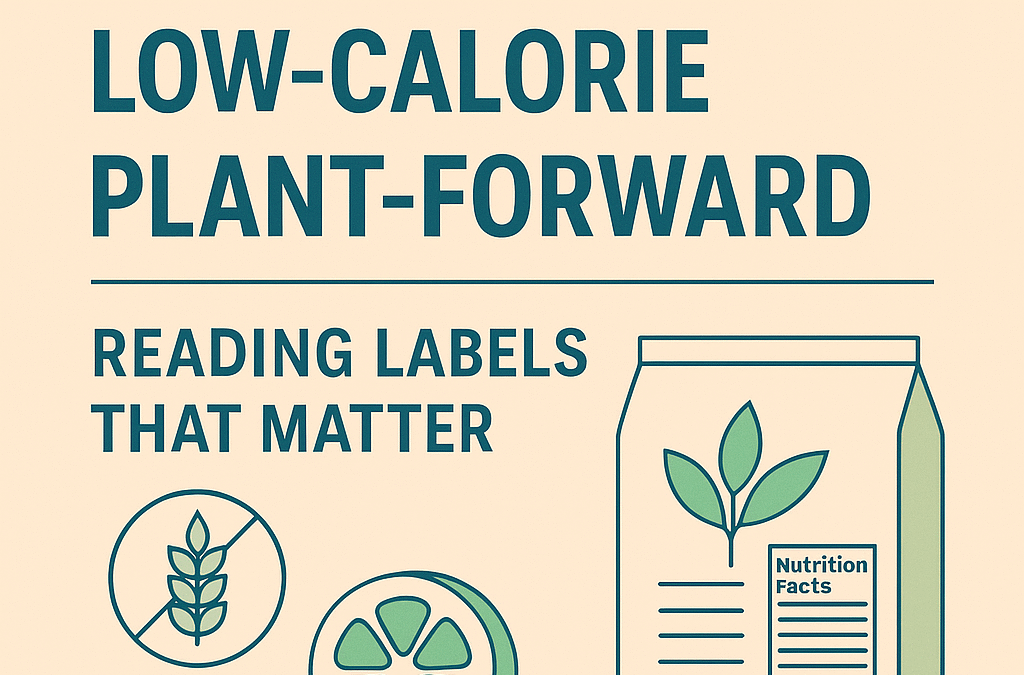Gluten-Free, Low-Calorie, Plant-Forward: Reading Labels That Matter
The rise of wellness-driven shopping has transformed the grocery aisle into a battleground of buzzwords. Terms like “gluten-free,” “low-calorie,” and “plant-forward” are no longer niche. They dominate everything from snack bars to frozen meals. But what do these labels actually mean, and how can you read past the marketing to make smarter, healthier choices?
This guide breaks down how to decode food packaging in a way that aligns with your health goals. Whether you’re managing a dietary condition, reducing calories, or shifting to more sustainable, plant-based eating.
Gluten-Free: What It Promises vs. What It Delivers
“Gluten-free” originally signaled safety for people with celiac disease or gluten intolerance. Today, it’s a full-blown marketing category. But gluten-free doesn’t always mean healthier.
A gluten-free cookie, for example, may be just as high in sugar or saturated fat as its conventional counterpart. In some cases, it’s worse. Many gluten-free products use refined starches like tapioca or rice flour that spike blood sugar and offer little nutritional value.
What to check:
- First three ingredients: Are they whole foods or processed starches?
- Added sugars: Gluten-free desserts often add sugar to offset taste changes.
- Fiber content: Whole grains offer fiber. Many gluten-free swaps don’t.
Bottom line: If you don’t medically need to avoid gluten, focus on nutrient density instead of the absence of wheat.
Low-Calorie: Not a Free Pass
“Low-calorie” labels can signal portion control or lightweight snacks, but not all calories are created equal. A low-calorie item might still be high in sodium, synthetic additives, or low-quality fats.
Look beyond the calorie count:
- Serving size: That “100-calorie” snack may include two servings per package.
- Sodium: Many low-calorie frozen meals compensate with salt. Check if it’s over 500 mg per serving.
- Artificial sweeteners: Look for acesulfame potassium, sucralose, or erythritol if you’re trying to avoid them.
A more meaningful measure: fullness per calorie. Does it contain protein, fiber, or healthy fats to help you feel satisfied?
Plant-Forward: Better, But Not Always Best
“Plant-forward” is a newer term used by brands to indicate an emphasis, but not exclusivity, on plant-based ingredients. It appeals to flexitarians and eco-conscious buyers alike. However, “plant-forward” doesn’t always mean minimally processed or nutrient-rich.
Red flags to watch for:
- Over-processed plant proteins: Textured soy protein or pea isolates are not the same as whole legumes.
- Lack of diversity: A product made mostly of corn, soy, and rice isn’t balanced, even if plant-based.
- Excess oils: Some plant-forward snacks use sunflower or canola oil in large amounts, which can raise omega-6 intake.
Tip: Look for short, recognizable ingredient lists with whole plants in the top five slots.
Smart Label Reading Starts with These Four Areas
Whether you’re avoiding gluten, watching your calories, or going plant-heavy, these four elements tell you more than any front-of-pack label.
- Ingredients list
Order matters. Ingredients are listed by weight. If sugar, starches, or oil appear early, that’s what you’re mostly eating. - Added sugars
The “total sugars” line on the Nutrition Facts label now distinguishes between natural and added sugars. Aim to keep added sugars under 25 grams per day. - Fiber
Look for 3 or more grams of fiber per serving in snacks, cereals, or meal replacements. Low-fiber diets are linked to blood sugar swings and poor digestion. - Protein-to-calorie ratio
For meals and snacks, aim for at least 5 grams of protein per 100 calories. This promotes satiety and supports metabolic health.
Don’t Let Branding Replace Reading
The biggest pitfall? Assuming that healthy-sounding branding means a product is actually healthy. Food marketers know which labels appeal to wellness-minded shoppers such as gluten-free, organic, keto, and plant-based, and they use them liberally, even on ultra-processed products.
If the label doesn’t match the numbers on the back, it’s just a story. And not one you need to buy.
Bonus Tip: Cross-Reference New Wellness Categories
If you’re exploring functional foods or supplements, especially those infused with adaptogens, CBD, or THC, take the same label-skeptical approach. For example, many of the best 5mg thc drinks use fruit juice or botanicals as a base, but may still contain added sweeteners or preservatives.
Make sure the dose, sugar content, and ingredient transparency meet the same standards you’d apply to any other product.
FAQs
Is gluten-free the same as wheat-free?
Not always. Gluten is found in wheat, barley, and rye. A product labeled “wheat-free” may still contain barley or rye-based ingredients.
Does low-calorie mean low-carb?
No. Some low-calorie products reduce fat or protein instead of carbs. Always check the full macronutrient profile.
What’s the difference between plant-based and plant-forward?
Plant-based typically means 100% free of animal products. Plant-forward means plant ingredients are the focus, but not necessarily exclusive.
How do I avoid greenwashing on food labels?
Ignore front-of-package marketing. Focus on the Nutrition Facts and ingredients list to assess real nutritional value.
Are plant-based meats healthy?
Depends. Some are minimally processed, others are high in sodium or industrial oils. Always read the full label.






